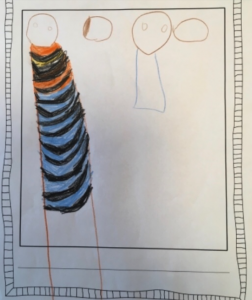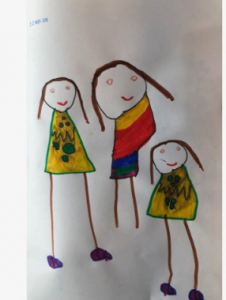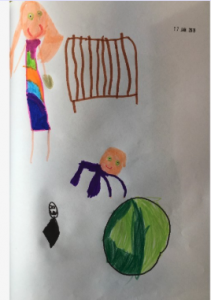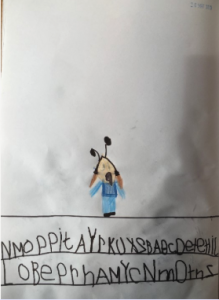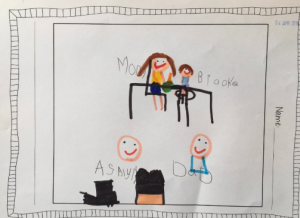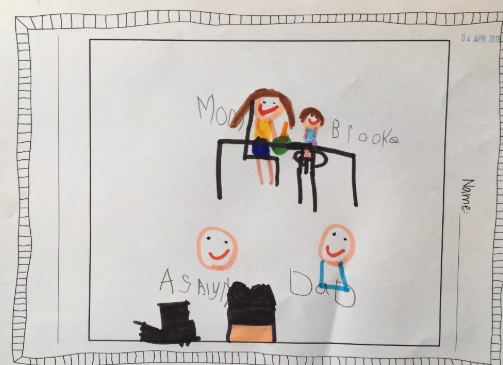Looking at student work is one of the most powerful sources of professional development available. Collaboratively looking at student work increases that value beyond measure. Whether on our own or with colleagues, the time we take to look deeply at student’s writing helps us to develop a plan for how to support individual writers in their stage of development at a given moment. It also helps us develop our own understanding and recognition of the stages of development, as well as the many bends in the road for a developing writer.
It is so important to consider all aspects of the developing writer in the early years. Teachers can quickly become distracted by the amount of print that may or may not be on the page, or by the control the writer might exhibit over his or her drawings.
Here are two tips for looking at student writing samples:
- Know the background: if it is your student, you probably already do. If it is a student you don’t work with, it is crucial to know more about the process the student has gone through, what he or she has said during conferences or at other times regarding the writing. So much of the “work” our youngest writers do is not detectable on the page alone. That which is detectable often needs the curation of an adult who was along for the journey. If collaboratively looking at work samples, I recommend using a modified version of a protocol such as LAST or ATLAS. Protocols such as these provide the opportunity to get a more inclusive picture of the “work” that has been done.
- Resist the urge to compare writers: Unless you are looking to better understand what different stages of writing look like in the context of a group of students, I see very little value in comparing different writers. More often, the comparison of writers leads to a “ranking.” Such ranking often neglects the many facets of a writer’s development which are not immediately apparent when comparing one student’s writing to that of another writer. Alternatively, looking at several samples of the same writer’s work over time, brings his or her individual development to the surface and can be very powerful in helping us to make decisions about how best to support that writer. For me, this is also a very encouraging practice as I often see so much more growth when I see a collection of a student’s writing over time. The samples below are a collection of one Kindergartener’s writing over time.
What do you notice about the development of this writer over the course of eight months?
